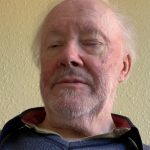Mitsubishi Ecodan & Raspberry Pi automations
Hi. I'm a webmaster (and server admin/software developer/troubleshooter) based in Norfolk, with an Mitsubishi Ecodan ASHP installed last autumn, monitored by both melcloud and an Raspberry Pi running OpenEnergyMonitor (because the melcloud user interface is poor). At the start of this month, I started letting a program on the Pi use the controls to make adjustments of the sort I was making manually (which I can't find any way to program into the ecodan controller), but it does goes to sleep if detects someone else using the controls. I've registered on the forum after lurking for a while because I saw a problem I thought I could answer.
@mikefitz some examples:
- adjusting the target temperature by a few degrees with the strength of wind or sun: we're in a fairly windy location, but get good evening sun, but the system has only one thermometer on the landing where it's fairly stable, so it's the last to know it needs to adapt. I guess we should have put it in a different location or added a remote sensor: benefit of hindsight! The Pi has its own thermometer connected too and gets weather reports and forecasts;
- heating a tank of water a bit hotter than usual on warm late afternoons: so it ends up a similar temperature to letting the water run out mid-evening and reheating as usual but costs less because COP is better when it's warmer;
- running the heating for an hour after heating the water tank, because it beats bringing the system up to temperature from cold twice — unless the house is already hot and unlikely to need further heat today. The Pi tries to estimate if that's the case from time and forecasts; and
- pausing heating (actually dropping the target temperature 3 degrees temporarily) when the predictions were a bit wrong and the house is overheating. If I don't do that and leave it solely to Mitsubishi's "auto adaptive", the heat pump starts cycling frequently for a while, which reduces COP.
@derek-m the system runs with weather compensation except for when the heating is "off" overnight or after overheating. As I hinted at, the auto adaptation does not seem to work well for our house, but this may be due to the controller thermometer being in a stable-temperature room instead of the living room. It seemed to get worse after the last firmware update in November and it irritates me a bit that we do not know the specifics of how it is intended to work, or what changed in the update.
I don't think the controller would do the other tweaks in any mode, though.
Posted by: @mjr@derek-m the system runs with weather compensation except for when the heating is "off" overnight or after overheating. As I hinted at, the auto adaptation does not seem to work well for our house, but this may be due to the controller thermometer being in a stable-temperature room instead of the living room. It seemed to get worse after the last firmware update in November and it irritates me a bit that we do not know the specifics of how it is intended to work, or what changed in the update.
I don't think the controller would do the other tweaks in any mode, though.
Hi mjr,
I suspect that you are perfectly correct, that certainly the Mitsubishi, and I don't believe any other manufacturer, have controllers that take account of solar gain and additional heat loss due to wind and rain. Though it would be quite feasible, I don't know that any manufacturer would bother to create such a system, since it would require the addition of a number of sensors, which would require careful positioning, and software that even if it can auto tune, would need to be adapted to the requirements of each individual property. I don't think that there would be many customers willing to pay the added cost that such a system would entail.
From the observations and tests that I have carried out over several years on our home heating system, the above external affects happen very slowly in most cases, so should be adequately accommodated by a correctly configured auto adaptation system.
The reason I was asking about the settings of your weather compensation parameters, is that I suspect if these are not correctly adjusted in the first place, then when auto adaptation control is enabled, it may not respond correctly as the outside air temperature varies. You could check this by switching off auto adaptation for a while, and see how the indoor air temperature varies with changes in outdoor air temperature. If the indoor air temperature does not remain within 1C of the desired temperature then the weather compensation parameter settings may need to be refined.
If you would care to provide details of what it is that you are trying to achieve, I may be able to suggest a design that more closely meets your requirements.
@derek-m I am using straight weather compensation ("curve" mode) most of the time because it works fine, holding temperature unless the wind changes (there is one line of trees a few hundred metres to our SW then flattish farm fields for 10 miles, to the NW no trees and 6 miles of fields). I read posts from you on here when setting it up, so belated thanks for that.
As mentioned, the auto adaptation mode doesn't work as well, which makes me think it's not starting from the same curve.
Posted by: @mjr@derek-m I am using straight weather compensation ("curve" mode) most of the time because it works fine, holding temperature unless the wind changes (there is one line of trees a few hundred metres to our SW then flattish farm fields for 10 miles, to the NW no trees and 6 miles of fields). I read posts from you on here when setting it up, so belated thanks for that.
As mentioned, the auto adaptation mode doesn't work as well, which makes me think it's not starting from the same curve.
Hi mjr,
Auto adaptation is the type of control that is normally used in industrial control systems.
In its most basic form, the variable to be controlled is measured using a suitable sensor, this Process Variable (PV) as it is normally described is compared against the desired Setpoint (SP), the resultant being the error. Obviously the error can have a positive or negative value, dependent upon whether PV is greater than SP or lower than SP.
These signals would normally be fed into a 3-term PID controller, the three terms being Proportional Action, Integral Action and Derivative Action, which you will no doubt recognise as mathematical functions, since the controller is merely performing a complex calculation. The output signal is then used to drive some form of actuating device, which hopefully will keep the process variable at approximately the desired setpoint.
An industrial controller can be configured for P only control, PI control, PD control or PID control, dependent system requirements and response times etc. The P, I and D settings are also adjustable, which allows fine tuning of the system for optimum control.
A heat pump controller probably contains a similar algorithm, which may have some self tuning capability, but as you are aware it is not possible for the end user to see what is actually happening within the controller itself, or make any adjustments that would change the characteristics or response of the controller.
Wind speed and direction is more likely to have a more rapid effect on the indoor temperature, particularly if there are areas where there are possible drafts due to leaky seals round windows and doors. It would probably be useful to monitor the wind speed and direction and also record the variations caused to the indoor conditions. This may then highlight areas to investigate for possible drafts.
Posted by: @mjr@derek-m I am using straight weather compensation ("curve" mode) most of the time because it works fine, holding temperature unless the wind changes (there is one line of trees a few hundred metres to our SW then flattish farm fields for 10 miles, to the NW no trees and 6 miles of fields). I read posts from you on here when setting it up, so belated thanks for that.
As mentioned, the auto adaptation mode doesn't work as well, which makes me think it's not starting from the same curve.
From what I have read on other forums, the Ecodan auto adaptation function doesn't use the weather compensation curve. Instead it uses the room and outside temperature, with some sort of 'learning' function. There are a couple of implications; if you're heating your house up from cold it will boost the flow much higher than your weather compensated curve so you'll get a warmer house quicker but higher bills. It's also been suggested that in the event of a power down, the learning is forgotten and has to be done again.
But this is only what I've heard and I've never used auto adaptation myself...
EDIT - a Mitsubishi-trained engineer I spoke to who knew I was successfully using weather compensation without thermostats advised me not to bother with auto adaptation.
Hi Kev,
I can't remember if it was in the Ecodan manual, or some other manufacturers manual, where the instruction was to set the weather compensation parameters before enabling auto adaptation.
I would expect the control algorithm, within the FTC controller, to initially set the water flow temperature dependent upon the outdoor air temperature (weather compensation) and then fine tune the control to achieve the desired indoor temperature (auto adaptation), with both working together.
The 'learning' capability I suspect is the self tuning aspect, where the controller adjusts the internal control parameters to accommodate the response times of your particular system. I would have expected these parameters to be stored in non volatile memory, so should not be changed by a power shutdown. It is possible that they could be changed by a full reset, or the installation of updated software.
If you find any further details I would be interested to know.
- 26 Forums
- 2,364 Topics
- 53.6 K Posts
- 236 Online
- 6,029 Members
Join Us!
Worth Watching
Latest Posts
-
RE: Octopus Cosy Heat Pump Owners & Discussion Thread
Yes. In addition or instead. The point us that trv b...
By JamesPa , 16 hours ago
-
-
RE: ASHP sizing - value of Heat Transfer Coefficient
@toodles Hi, my friend recently made a video about heat...
By HeatPumpMe , 21 hours ago
-

How long will your energy contract last?
Some heat pump tariffs don’t run as long as a heat pu...
By Toodles , 2 days ago
-

@morgan They are unsupervised these days, can’t get the...
By Toodles , 2 days ago
-
-

RE: Setback savings - fact or fiction?
Exactly. We only need to compare conditions, to decide ...
By cathodeRay , 3 days ago
-
RE: Balancing financial efficiency and comfort using the Octopus Cosy tariff
I found because I have very low heat loss I can set bac...
By RadWhisperer , 3 days ago
-
RE: Need Help Optimising My Rushed ECO4 Install: 12kW Bosch Heat Pump
Welcome @mickamills We too have an oversized 12kW Sa...
By Old_Scientist , 3 days ago
-
RE: My Powerwall 3 Consumes 3-4 kWh/Day in Self-Consumption: Is This Normal?
@caron I can confirm that the power usage of the PW3 is...
By Old_Scientist , 3 days ago
-
RE: Speedcomfort radiator fans
Thats true, but having tried (and succeeded) in constru...
By JamesPa , 3 days ago
-
RE: Solis S6-EH1P8K-L-PLUS – Why I Chose It and What I’ve Learned So Far
@bash brilliant, thanks for the feedback
By energy9165 , 4 days ago
-

RE: Heat Pump Heats the House… But It’s Not Cosy. Emitter Changes or System Tweak?
@alastair There I was, feeling grumpy, he said “Cheer u...
By Toodles , 4 days ago
-
RE: Grant Aerona: Is there a setting to keep the 2-port valve open during pump blockade
Depends on OAT. Mine cycles at OAT>10 and of course...
By JamesPa , 4 days ago
-
RE: New Fogstar 15.5kWh upright solution
@transparent My conclusion is as you have noted, tha...
By Bash , 4 days ago
-
RE: Mitsubishi Ecodan R290 10kW performance
And to you too. Wishing you a very enjoyable festive s...
By Sheriff Fatman , 4 days ago
-

RE: External pipework insulation
They do? But that isn't apparent from the photos we'r...
By Transparent , 4 days ago
-

RE: Say hello and introduce yourself
@velcro welcome to the forums. Please feel free start a...
By Mars , 5 days ago
-
Daikin EDLA11D3V3 DHW Settings
I have a newly installed EDLA11D3V3 which I'm still get...
By Velcro , 5 days ago
-
RE: Midea ASHP – how to set weather compensation
@curlykatie did you get sorted with this?
By MickaMills , 5 days ago





